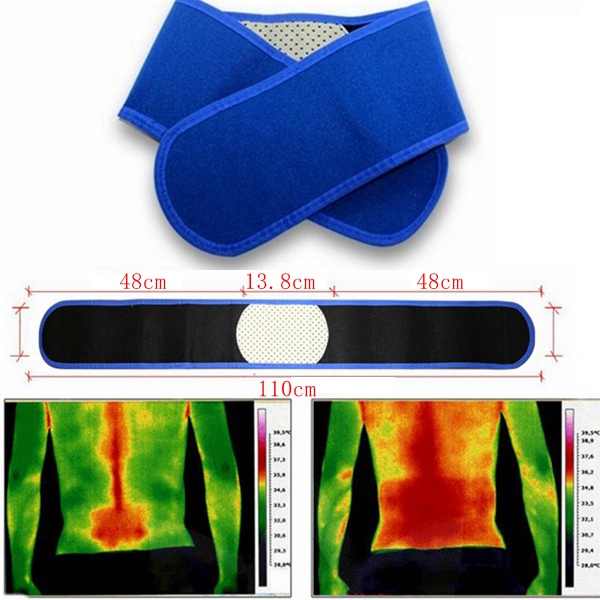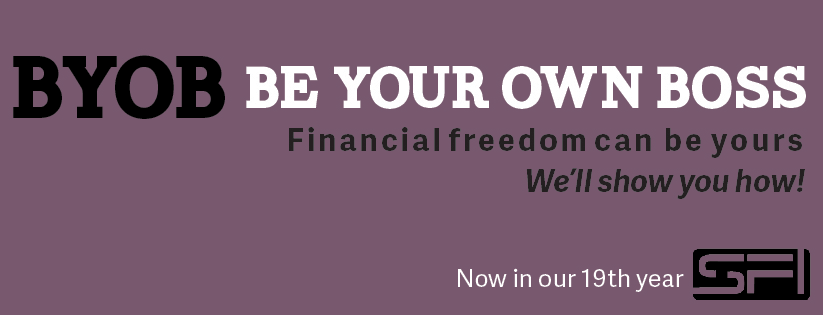Blue Tourmaline Self Heating Magnetic Therapy Pain Relief Back Waist Support Lumbar Brace Belt
EditDiagnosing the Problem
 Find out what is causing the pain. Most lower back pain goes away after a few weeks. If your back pain, however, persists for more than two weeks, see an internist and get a referral to specialist to diagnose the pain. Lower back pain, as commonly referred to, is pain in the lower back, widely diffused. Lower back pain is usually not spinal pain or pain in the spinal muscles.
Find out what is causing the pain. Most lower back pain goes away after a few weeks. If your back pain, however, persists for more than two weeks, see an internist and get a referral to specialist to diagnose the pain. Lower back pain, as commonly referred to, is pain in the lower back, widely diffused. Lower back pain is usually not spinal pain or pain in the spinal muscles.- Lower back pain can be caused by any number of factors:[1]
- If you are unsure about what is causing your lower back pain, or you think any of the above conditions may be manifesting in lower back pain, see your doctor. A doctor will be able to prescribe pain killers that ease discomfort while helping you devise a physical rehabilitation routine.
 Rest. You use your lower back muscles directly while bending forward and back, and also indirectly, while exercising and moving around. Although your lower back muscles are strong, they require rest. Sometimes, the onset of pain will significantly diminish when the lower back muscles are given the proper rest.
Rest. You use your lower back muscles directly while bending forward and back, and also indirectly, while exercising and moving around. Although your lower back muscles are strong, they require rest. Sometimes, the onset of pain will significantly diminish when the lower back muscles are given the proper rest.- Consider whether you might have injured your lower back while sleeping. There are a couple things that you can do to ease lower back pain while you sleep:
- Sleep on your side.[1]
- Try sleeping with a small pillow tucked between your legs. A small pillow will give your lower back extra support by straightening out the legs while you sleep.
- Consider switching to a medium-firm mattress. According to some sources, a medium-firm mattress may put the least stress on your lower back.[1]
- Consider whether you might have injured your lower back while sleeping. There are a couple things that you can do to ease lower back pain while you sleep:
 Correct any bad posture, if necessary. If you have bad posture, it may be causing or contributing to your lower back pain. The lower back is particularly susceptible to pain caused by bad posture because it supports a good deal of your weight.
Correct any bad posture, if necessary. If you have bad posture, it may be causing or contributing to your lower back pain. The lower back is particularly susceptible to pain caused by bad posture because it supports a good deal of your weight.- Good posture is having the spine curved slightly inward at the lower back, slightly outward at the upper back, and slightly inward again at the neck (so the neck is upright but tilted slightly forward).
- If your shoulders tend to slouch, pull them back a bit so they are centered. Do not expand your chest out and pull your shoulder excessively back like a preening bird.
- Throughout the day, periodically perform posture checks. Check to see if:
 Make sure your workstation is ergonomically supportive. Let's face it: we spend countless hours at work, toiling away, often not in a very good position for our lower and upper back, our legs, and our hands. Correct your workstation to improve your posture and ease lower back pain.
Make sure your workstation is ergonomically supportive. Let's face it: we spend countless hours at work, toiling away, often not in a very good position for our lower and upper back, our legs, and our hands. Correct your workstation to improve your posture and ease lower back pain.- Keep your feet flat on the floor. This will often depend on how high your chair is, so don't be afraid to tinker with it to achieve good results.
- Change your posture regularly. Sitting in one position for long periods of time is not healthy. So switch it up. Sit upright for most of the time. Sit reclined for some of the time. Sit declined for a little bit.
- Find time to stand. Every hour, take a 5 minute break if you can and walk around. Inspect the sky. Talk to a coworker. Figure out the 11th decimal of pi. Whatever it is, break up the monotony of being seated for hours on end.
EditTreating the Symptoms

 Take nonsteroidal anti-inflammatory drugs, or NSAIDs, for pain relief. NSAIDs are a group of pain killers, like ibuprofen and aspirin, that ease inflammation and stop pain by blocking certain enzymes on a chemical level.[4]
Take nonsteroidal anti-inflammatory drugs, or NSAIDs, for pain relief. NSAIDs are a group of pain killers, like ibuprofen and aspirin, that ease inflammation and stop pain by blocking certain enzymes on a chemical level.[4]- Take OTC ibuprofen as directed by the package. Ibuprofen will help ease any inflammation and help control the pain on a chemical level.
- Aspirin may be taken by adults, but it should not be given to children. Aspirin has been linked to Reye's syndrome, which causes acute brain and liver function damage in children.[5] One added benefit of aspirin, however, is that it lessens the likelihood of blood clotting, and so could be helpful in staving off heart attacks.[4]
 Treat the pain with ice. Ice helps constrict the blood vessels underneath the skin, dulling pain and easing swelling. If you want to use ice on your lower back, there are a number of ways medical practitioners advice to apply it:
Treat the pain with ice. Ice helps constrict the blood vessels underneath the skin, dulling pain and easing swelling. If you want to use ice on your lower back, there are a number of ways medical practitioners advice to apply it:- Use an ice-towel. Wet a towel with cool water, wring out most of the moisture, and place into a plastic bag. Put the bag into the freezer for 15 to 30 minutes, remove towel from bag, and place over lower back.[6]
- Use a homemade ice-pack. Put one pound (0.45 kg) of ice into a plastic bag. Pour in just enough water into the bag to cover the ice. Squeeze excess air from the bag, seal it, and apply to lower back.[6]
- Use a frozen bag of vegetables. Peas work particularly well.
- Use a homemade slush pack. Mix three cups of water and one cup of denatured alcohol into a freezer bag. Wait until slush forms (but before it becomes completely frozen), remove, and apply to lower back.[6]
 Treat the pain with heat. Heat can also be an effective source of comfort and pain relief for lower back pain. For effective temperature therapy, try alternating between heat and cold treatments.
Treat the pain with heat. Heat can also be an effective source of comfort and pain relief for lower back pain. For effective temperature therapy, try alternating between heat and cold treatments.- Use moist heat on the lower back for 15 to 20 minutes at a time. Moist heat (baths, steams, heat packs) tends to work better than dry heat.[6]
- Purchase and use an all-day heat wrap, available OTC at most pharmacies.
- Try not to fall asleep with an electrical heating pad on. Set your heating pad to low or medium, never to high, and set an alarm if you think you may fall asleep while the heating pad is still on.[6]
EditRelieving the Pain
 Try stretching for lower back pain. Lower back pain can be a vicious cycle. Your back hurts, so you don't want to make it worse by stretching or exercising. But by not stretching or exercising, you weaken the muscles in the lower back, leaving them more susceptible to pain and less supportive of the weight they are designed to hold. Try some of these exercises for lower back pain relief. Stop if any of these exercises causes pain.
Try stretching for lower back pain. Lower back pain can be a vicious cycle. Your back hurts, so you don't want to make it worse by stretching or exercising. But by not stretching or exercising, you weaken the muscles in the lower back, leaving them more susceptible to pain and less supportive of the weight they are designed to hold. Try some of these exercises for lower back pain relief. Stop if any of these exercises causes pain.- Butterfly. Sit down on a mat with your knees bent and bring your feet together. The sides of your thighs should try to reach the ground. With your hand clutching your feet, slowly lower your torso down over your feet, keeping your thighs and backside on the ground. Stay in this position for 15 seconds and move slowly back up.
- Happy baby. Begin by lying flat on your back on a mat. Bring both legs back, bend your knees so that your thighs are parallel to the floor and your legs are perpendicular, and grab onto the outside of your feet with your hands. Use your upper body strength to press both knees down closer to the floor. Stay in this position for 15 seconds and slowly release.
- Pigeon. Sit with your left leg crossed in front of you and the right leg extended fully behind you. Make sure your right hip is pointed down to the ground. Keeping your hands on your hips, arch your back gently for a stretch. Then, move your hands out in front of you and move your torso down over your crossed knee. Stay in this position for 15 seconds before moving slowly back up.
- Avoid the following stretches while back pain is present:[7]


 Test out other back therapies which could provide treatment and relief. In addition to walking, back stretches, and core stabilization, other treatments can offer targeted pain relief and even treatment. Explore which of these options may work for you:
Test out other back therapies which could provide treatment and relief. In addition to walking, back stretches, and core stabilization, other treatments can offer targeted pain relief and even treatment. Explore which of these options may work for you:- Massage. There are numerous kinds of massage, some of which are good for the back (Swedish massage) and others that may not be good for a back injury (Shiatsu massage). Talk to your doctor or masseuse about options.
- Spinal manipulation. Many people who benefit from spinal manipulation see results pretty much right away.[8] Many chiropractors or physical therapists who practice spinal manipulation will work with your doctor to devise the best course of treatment.
- Acupuncture. Acupuncture is the ancient Chinese medicine using needles and pressure points to access the chi. If that sounds dubious, just consider: several tests have demonstrated that people suffering from lower back pain experienced decreased pain and increased mobility after acupuncture.[9]

















No comments:
Post a Comment